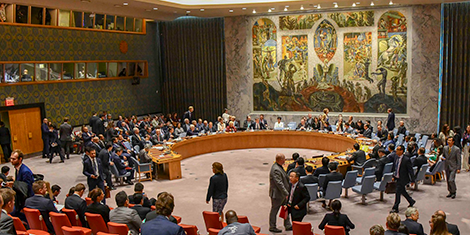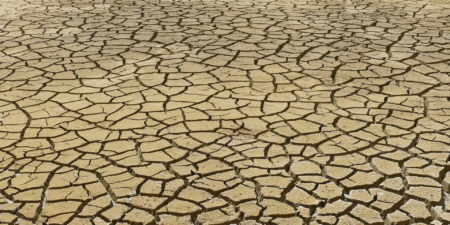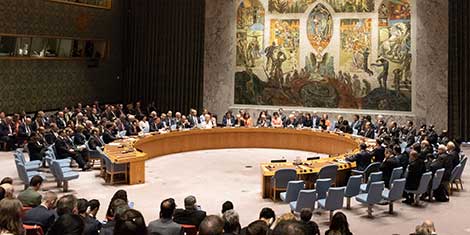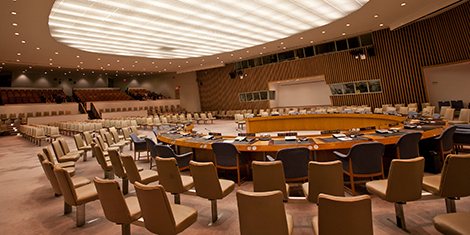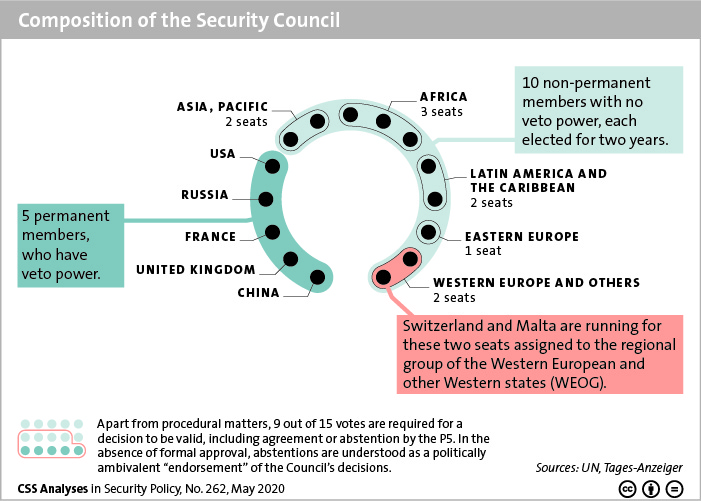
This graphic provides an overview of the composition of the UN Security Council. A common criticism is that this composition and the existence of permanent veto powers reflect the situation at the end of World War II. This is considered outdated by many UN member states, including Switzerland, which has been campaigning for reforms since 2005.
This year, Switzerland applied for the first time to take a seat as a non-permanent member of the UN Security Council. Being a member would undeniably entail many opportunities, but also some risks. For insights on the Swiss candidacy for the Security Council, see Fabien Merz’s CSS Analyses in Security Policy here.

